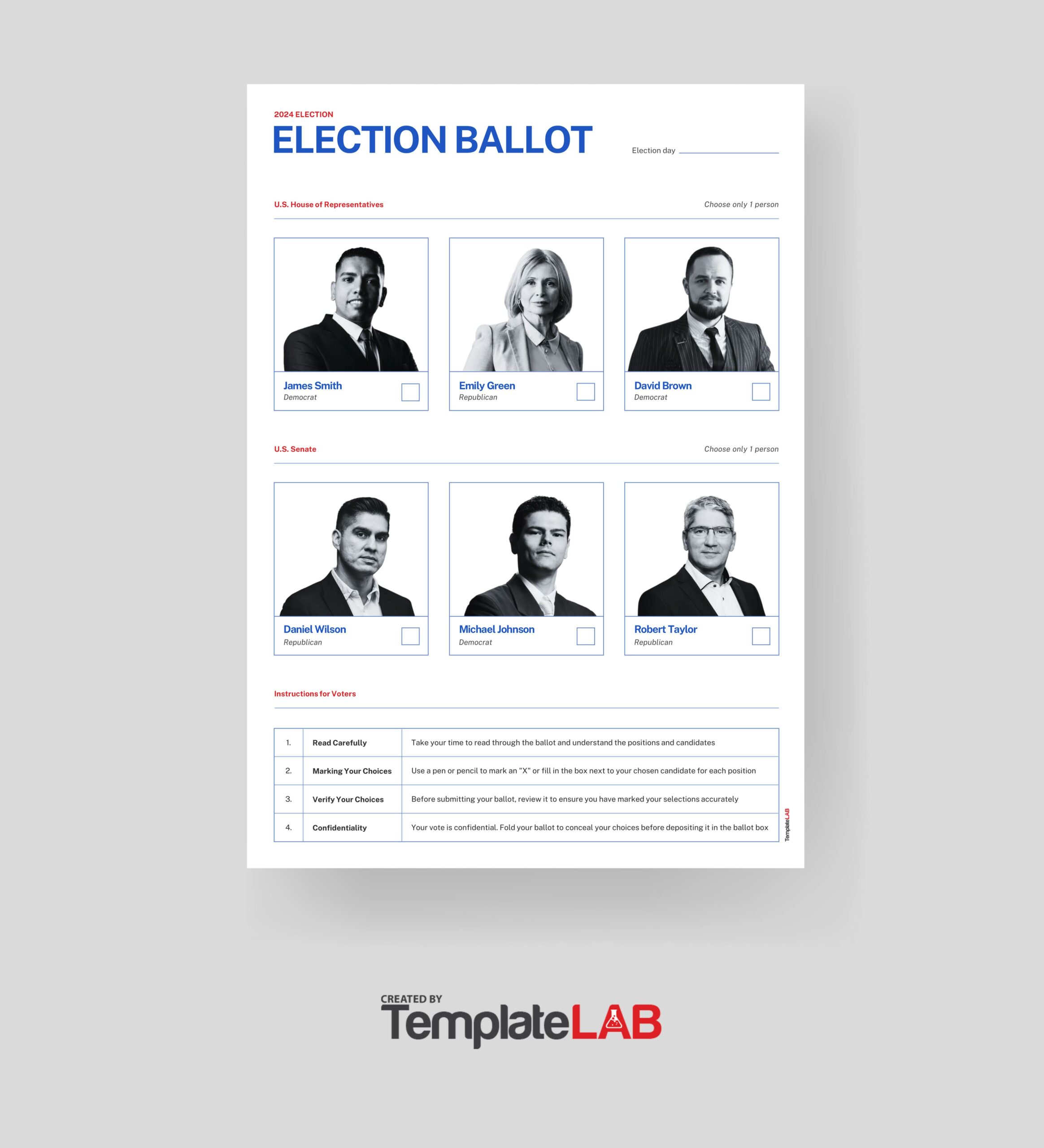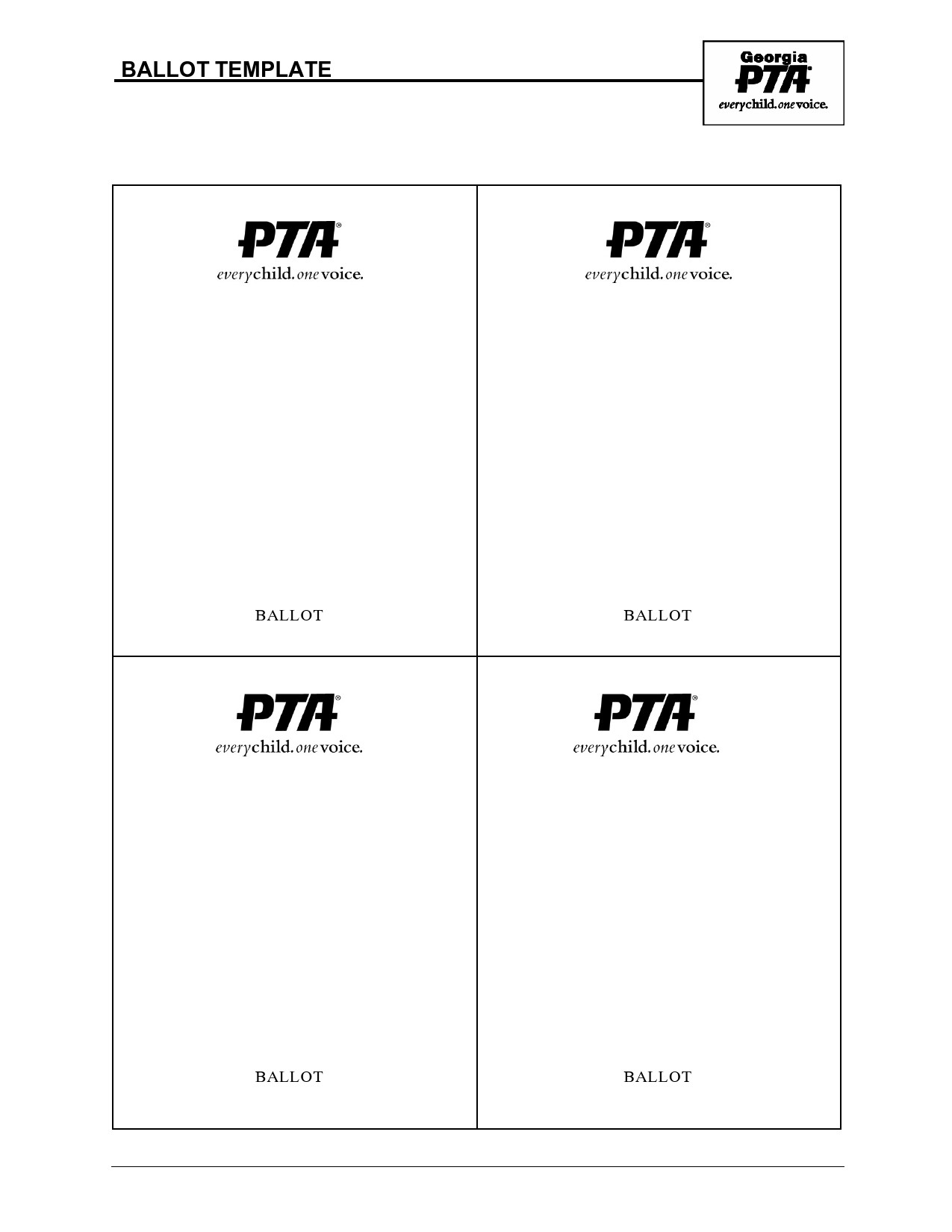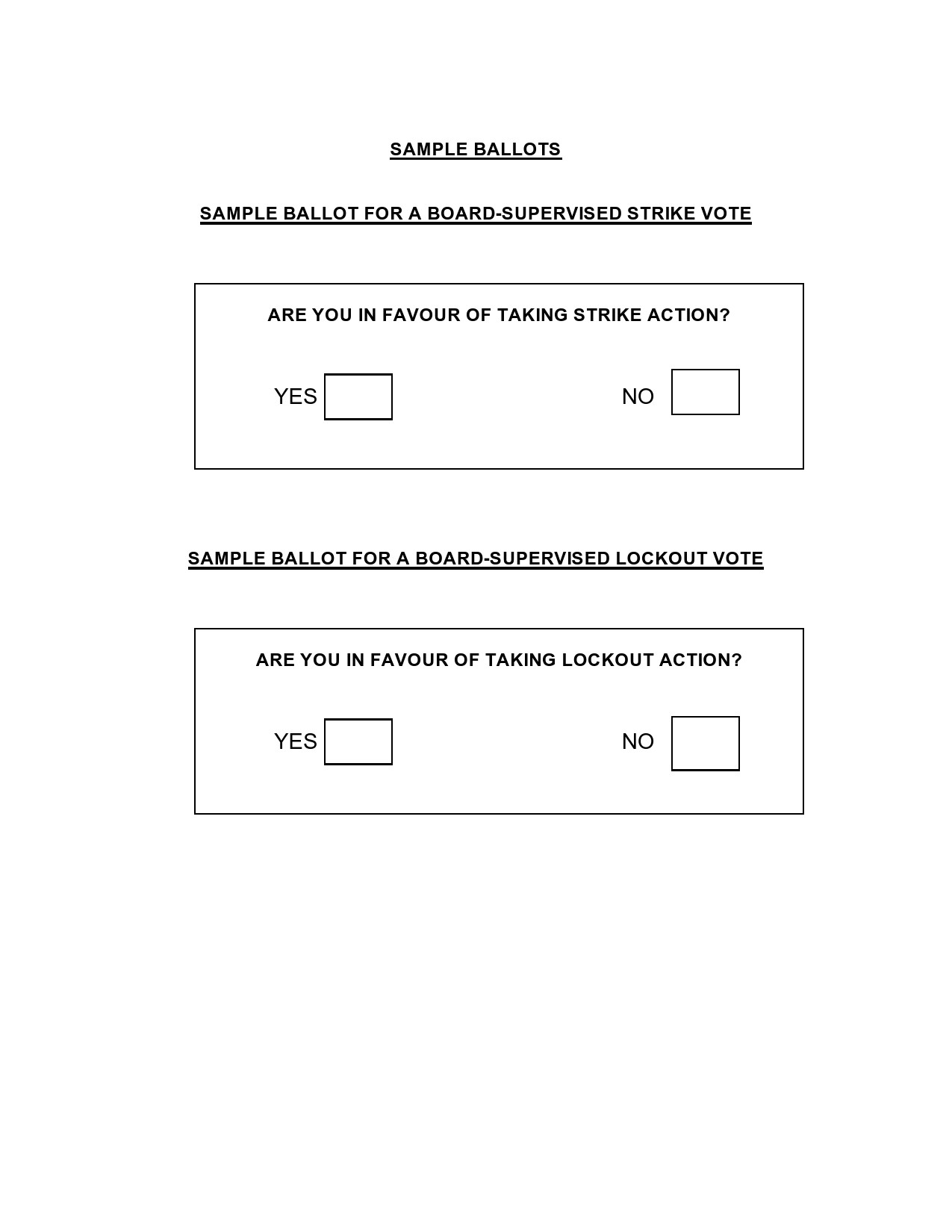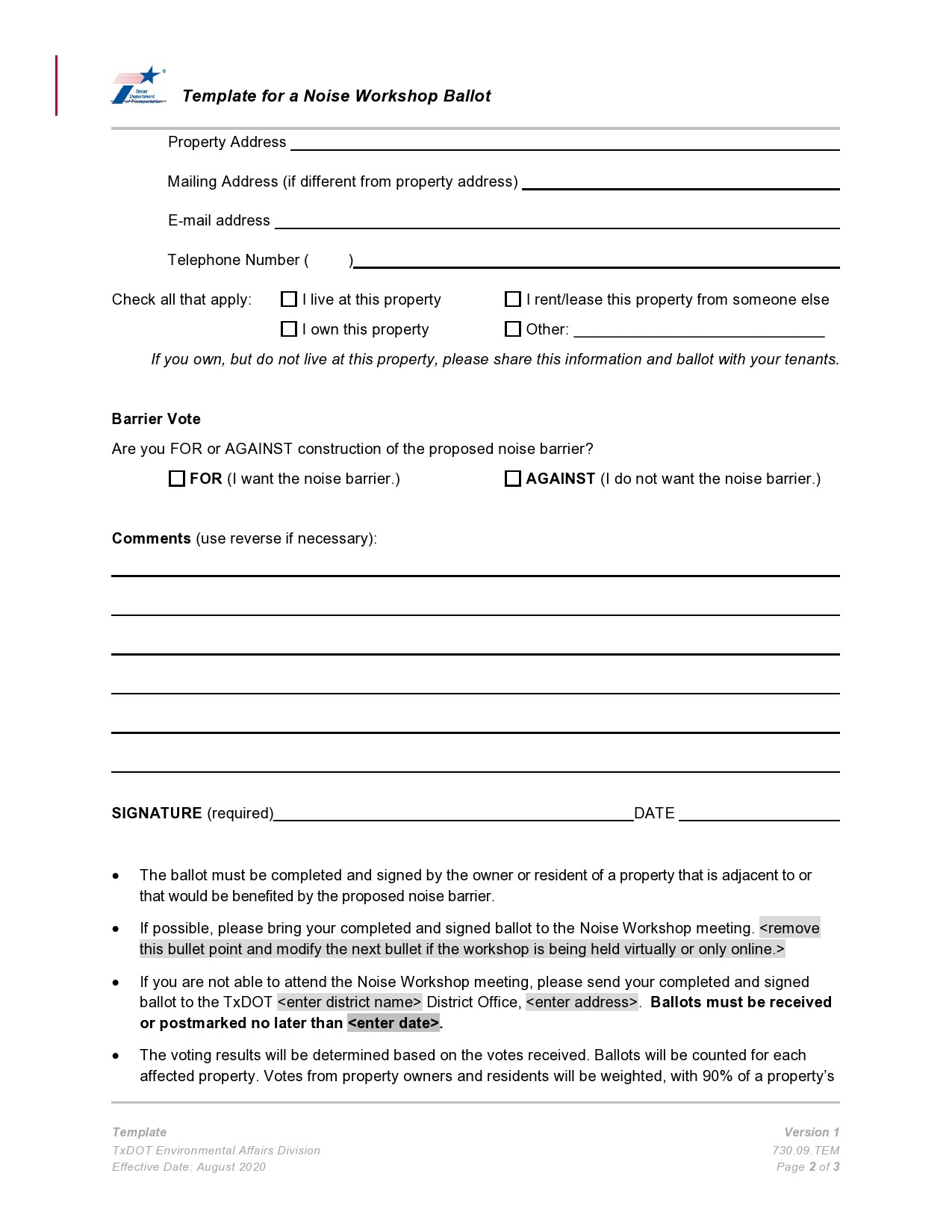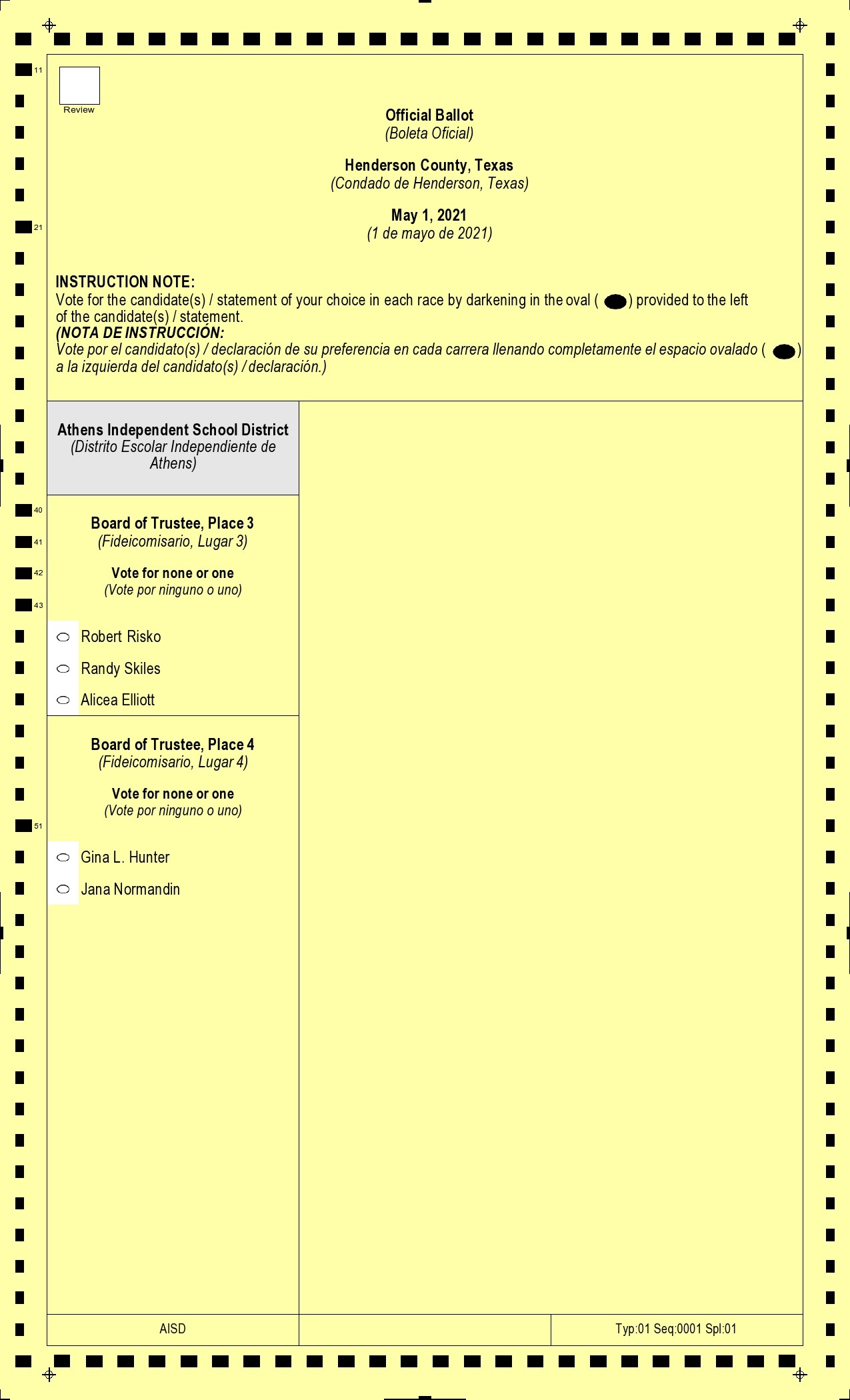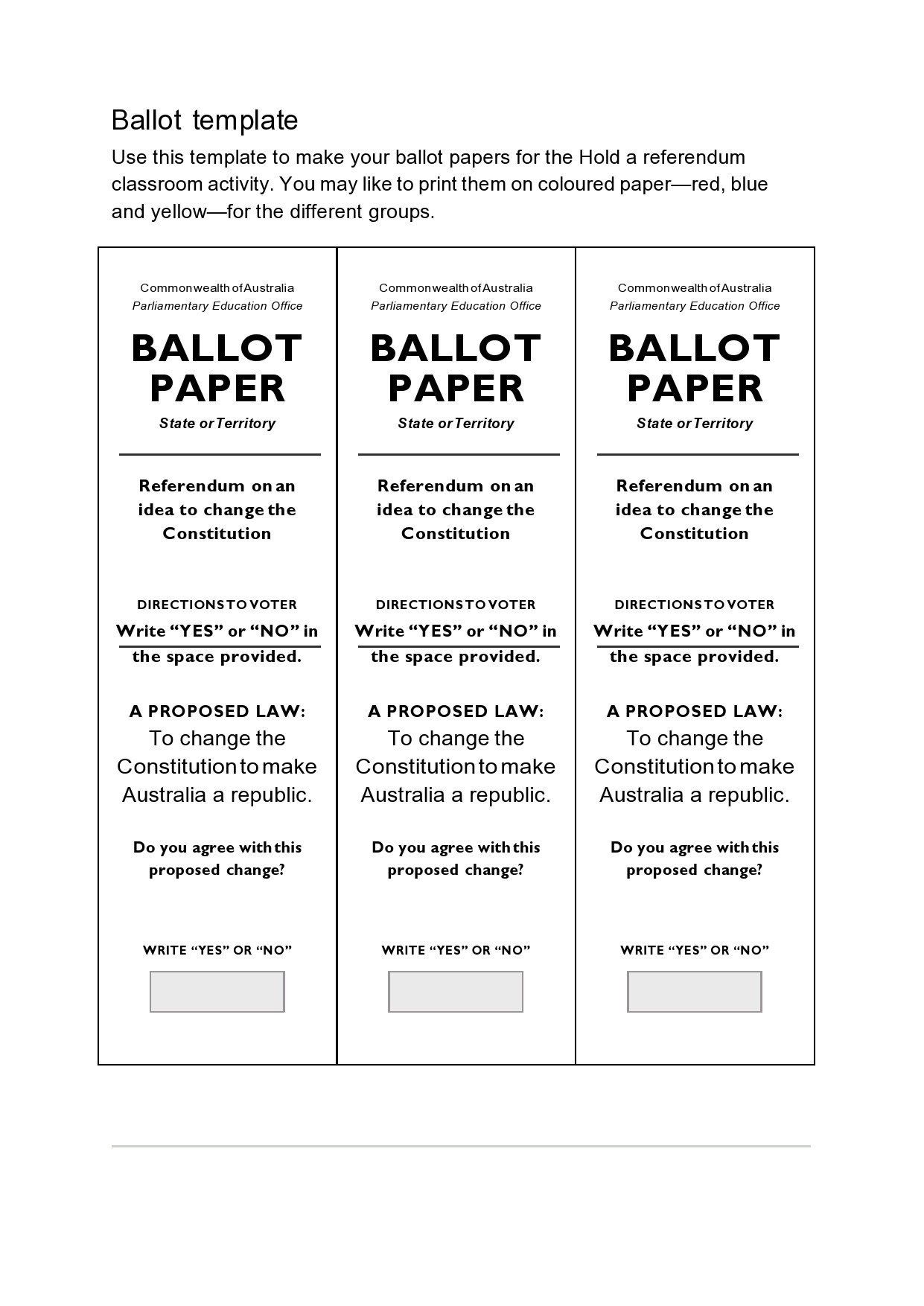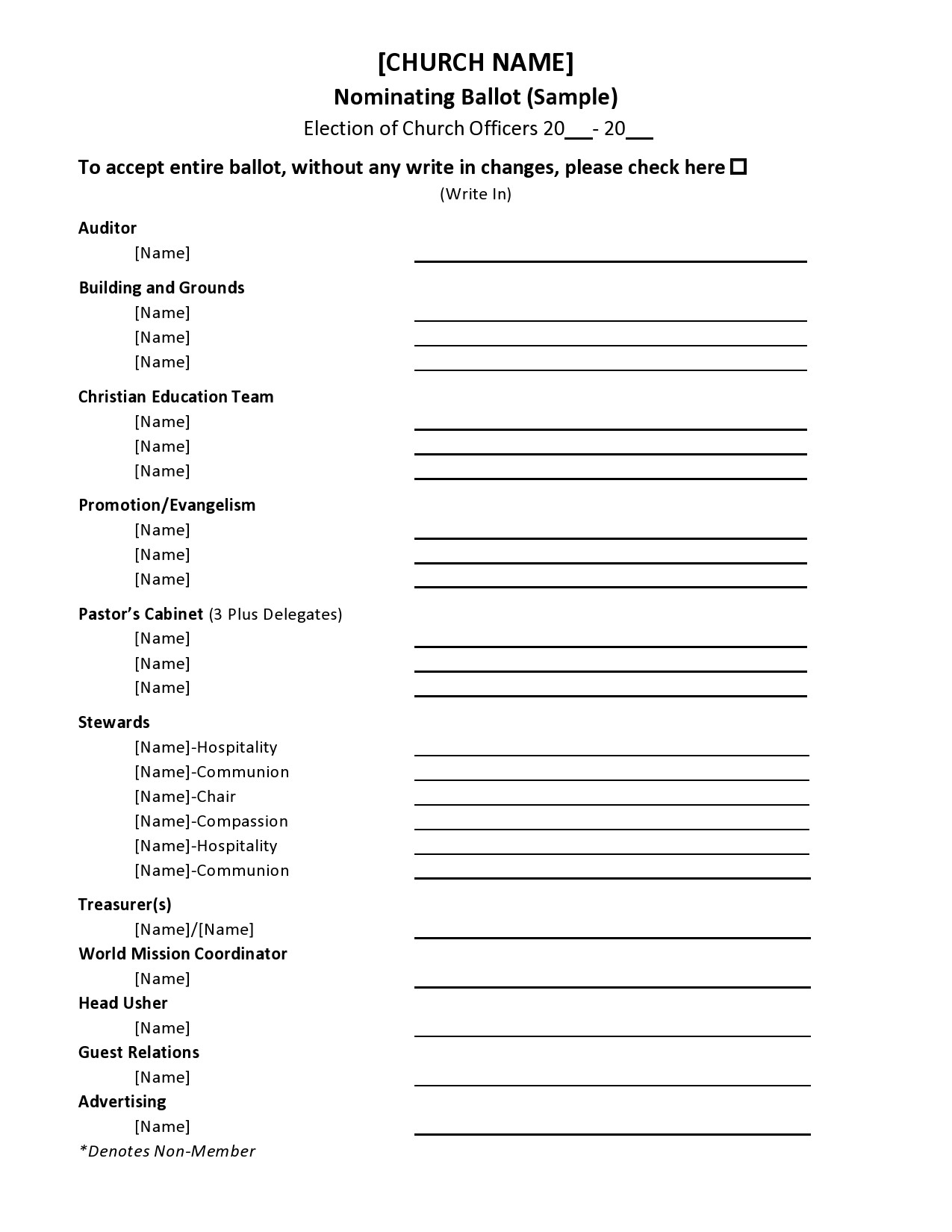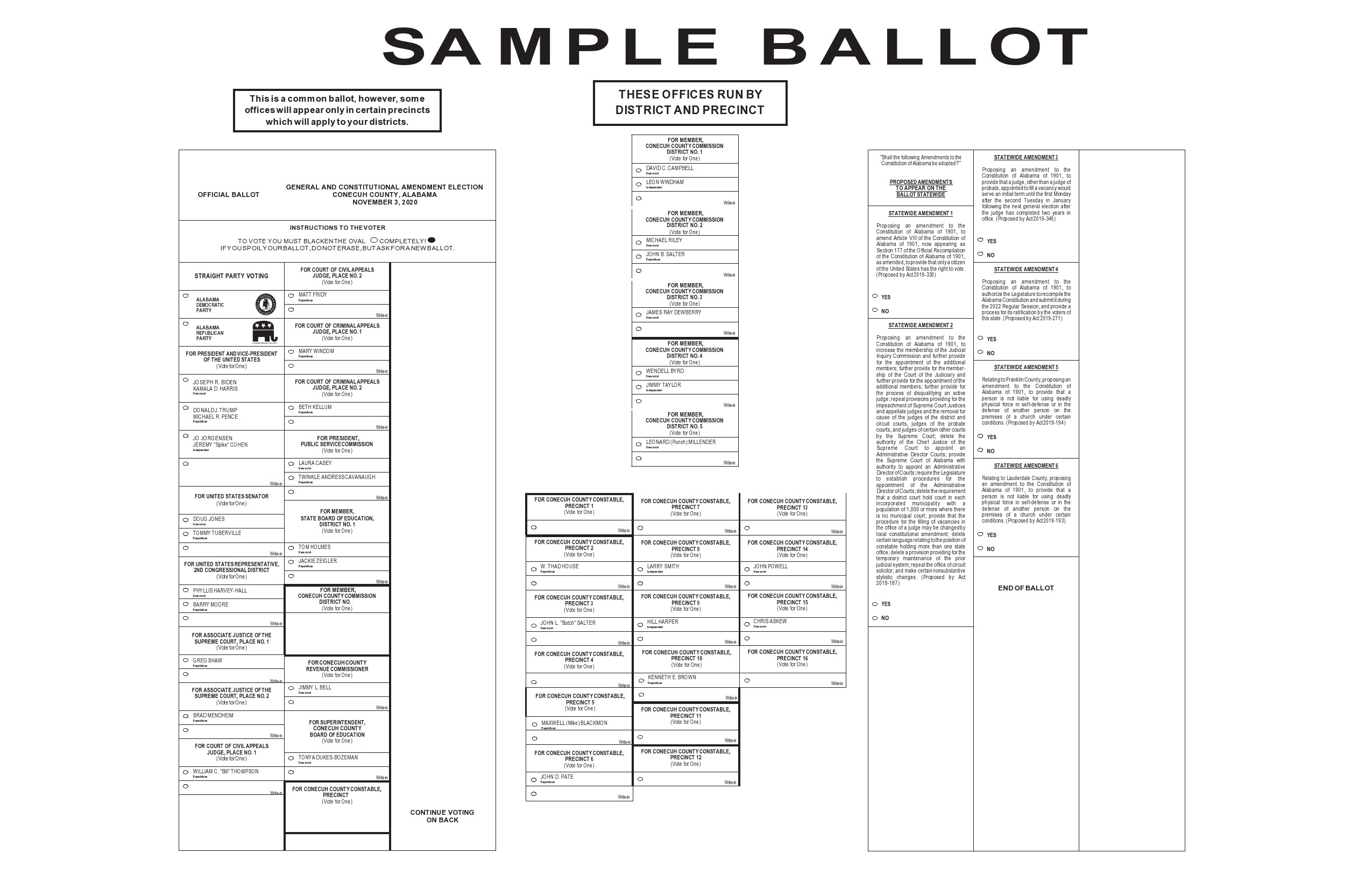A ballot template usually comes into the picture during the election. A ballot is a document used list the candidates running for a post or various candidates for various posts in one single ballot paper. The voters mark the person they wish to vote for in the prescribed format and cast their vote. It’s useful for elections in schools, colleges, choosing an employee of the month based on worker’s choice, local resident welfare bodies or any other organization for that matter where elections are to be held for filling the positions.
Table of Contents
Ballot Templates
Designing your ballot template
The country has gone through several testing of ballot templates where it has implemented simple design principles to make voters vote the way they plan to. A voting ballot template is one of the most important sources of interaction between the citizens and the government.
Unfortunately, many of these votes in government elections and other organizations each year are lost because the sample ballot template has a poor design. Yet, avoiding these issues doesn’t have to be difficult or expensive.
The appearance of an election ballot template comes constrained by technology, legislation, history, cost, custom, and other factors. But the structure of printable ballots for voting is relatively consistent in various bodies across the US. If you plan to design an official template, you need to consider these guidelines:
- Use lowercase letters
Since the shapes lowercase letters are much easier to recognize, they’re more legible. - Don’t center the information
Left-aligned types are more legible compared to centered types as the latter forces the voter’s eye to search for the beginning of the next line. - Use a font that’s big enough
Small types are much harder to read for a lot of voters. Using larger text increases the number of pages but this is a worthwhile change in terms of election accuracy. - Go with a sans-serif font
These fonts have clearer strokes. For materials with two languages, use bold text for the main language and regular text for the secondary language. But using too many different fonts make the voters stop reading because they need to adjust. - Structure the template properly
Put the instructions where the voters can see them clearly. Add page numbers to show the voter’s progress. For digital ballots, allow voters to change the language or display options with the instructions. - Use clear and simple language throughout
Make options and instructions as simple as possible. Don’t include over two languages. If it’s possible, summarize the referenda using simple language along with the required format. - Use accurate illustrations for the instructions
Visual instructions aid all voters, especially those with low-literacy. Illustrations should be very accurate. However, you shouldn’t use photographs. - Only use informational icons
Use icons that call attention to support navigation and other key information carefully. Never use emblems of either political party. - Use color and contrast to support meaning
Aside from using colors, there are other ways to communicate significant information. When using shading and color, apply this consistently. On paper ballots, use these separate instructions from contests. Also, use these to separate contests from one other. On digital ballots, use these to support navigation, provide user feedback, or call special attention. - Highlight the most important details
Use text size and layout to help the voters know what to focus on. Make the ballot title the most prominent. Make the contest header more prominent than the names of the candidates. The name of a candidate must have bolder formatting than their party affiliation. Present the names of the candidates and options with equal importance.
Voting Forms
Ballot templates for the blind
Although a voting ballot template is very simple, it’s not for everyone. For those who are visually impaired, they need a different type of template for them to vote. Today, ballot templates are of thick and durable paper placed over actual paper ballots.
This allows voters to choose the candidates to vote through tactile round cutouts in the template that represent the candidates and their parties. Since you can use this template for the candidates in your region, it allows all voters to participate.
Furthermore, to determine which cut-out represents each individual candidate, the Audio Description Association provides information about all the candidates in various regions. It also prepares videos that provide information before the date of the election.
Those who are visually impaired can access these videos with audio descriptions, sign language, or subtitles – for voters who are both deaf and blind. The basis of this information is the data presented on the Supreme Electoral Council site, which is the country’s highest electoral authority.
Voting Templates
Common misinformation connected with ballots and voting
Since there is no clear winner yet in the current presidential election, this gives conspiracy theorists, partisan activists, and other similar entities the opportunity to exploit public anxiety and uncertainty in their attempt to de-legitimize the results of the election.
Using a ballot template is very simple but the process of voting is a complex one. You must vigilantly watch and avoid spreading misinformation that can erode trust in the electoral process. Aside from learning how to make a sample ballot template, avoid the following misinformation:
- Doubtful and confusing information
Waiting for the results of the election can bring about a lot of stress for everyone. It’s during these times of uncertainty that people become vulnerable to manipulation and misinformation. Even the experts find it hard to make predictions and comprehend how the remaining votes will line up.
This lack of certainty and understanding can fuel confusion and doubt, encourage misinformation, and give opportunities to those who seek to delegitimize the election results. Try to avoid this at all costs. - Voting fraud “evidence”
Many voters have made statements where they shared their experiences at the polls. Aside from a few isolated cases, the vast majority of events were fairly uneventful. This goes the same for social media and local news outlets, as these uncovered isolated issues in terms of voting at polling stations and mail-in ballots.
As expected, the politically-motivated people are the ones who tend to “cherry-pick” then assemble digital “evidence” that fits narratives meant to undermine the trust in election results. - “Lost and found” ballots
Perhaps one of the most dominant woven-narratives peddled is about Democratic activists or officials who have supposedly forged or faked votes or vote totals to make up ground after the closing of the polls. There have also been false claims that nefarious activists or poll workers have discarded, intentionally mislaid, or destroyed Republican ballots or worse, replaced these ballots with Democratic ones.
People can use the purported anomalies in statistics, together with news reports about misplaced ballots or occasional videos of alleged ballot mistreatment to form a narrative of a multileveled and vast institutional conspiracy. Since modern conspiracy theories are relatively uncritical, even tangential elements like the Sharpiegate claim could get blended into this broader tale. - Bad projections
There is no such thing as a perfect election model as even the best ones can provide erroneous results. Inaccurate projections, whether intentional or not can get picked up then used as a source in contesting results that come in conflict with the projections. This casts doubt on the whole process.
The two most controversial factors in this year’s elections are – that the polls differ from the actual vote share and the demographics and scale of mail-in voting that skews Democratic. These have complicated the traditional models used in projecting victory.
These conditions, together with the close margins in a number of states have made it more difficult to project the winners. As a consequence, this leads to longer periods of uncertainty that create an opportunity to spread misinformation. - Premature victory claims
Creating potentially inaccurate and premature claims of victory can also set the stage for arguing that conflicting results are somehow spurious or show a “rigged” election. This argument can advance the goal of a political candidate to appeal to their supporters. Sadly, though, this undermines the trust in the fairness of the election process.
Ballot Forms
How to voters fill up ballot templates?
The instructions on how voters will fill up printable ballots for voting are very simple. Usually, voters don’t need further explanation. For voters to fill up ballot templates correctly, they can follow these instructions:
- Follow the instructions to indicate the choice of candidates.
- Make sure to use the correct ink color.
- Ballots shouldn’t have any stray marks.
- Handle the ballot carefully to avoid tears.
- If the ballot isn’t unreadable, it and can’t get processed. In such a case, it will get discarded.
It is a requirement in most states that the voters sign an affidavit on the exterior of the envelope for a mail ballot. This affirms the voter’s identity and their voting eligibility. This is why voters should sign the envelope.
In some states, ballots get verified by matching the voter’s signature on the registration form. Others use the voter’s signature on the government’s file like that found in a person’s driver’s license. It is important for voters to know the rules of their state.
Depending on which state or which organization, they might even require a signature from a notary or a witness. After filling the ballot, a voter must follow the instructions on how to place the ballot inside the envelope. There are some states where only count ballots received on the date of the election.
Other states claim that they count ballots that arrive late if they’re postmarked on or before this date. Voters should mail their ballots early to ensure that their votes get counted. Other options include communities that offer official drop boxes for ballots.

